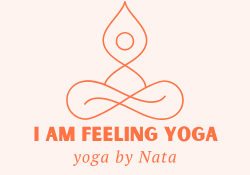When I began working with Maya, a bright and creative 6-year-old, her parents were exhausted. Every morning was a storm of forgotten gloves, and lost or unfinished homework assignments. Maya often started brushing her teeth and forgot halfway through what she was doing. She’d pack her backpack—and leave it in the hallway upon leaving the house. Despite her intelligence and curiosity, daily routines unraveled quickly. They had tried charts, timers, and even a special memory song. Nothing stuck.—Her parents were feeling confused. Despite her brightness, Maya often forgot what to do next and constantly misplaced everyday items. Through targeted yoga and mindfulness sessions, we gently worked on improving her working memory using movement patterns, breath-based sequencing, visualization, and body awareness. After 12 sessions, Maya forgot or misplaced items less often and started confidently recalling where she placed things. Her parents were so happy to notice that fewer reminders were needed and more independence began sprouting.
Why Memory Matters in Childhood Development
Memory is central to a child’s ability to function independently, from remembering morning routines to keeping track of personal belongings. For children, even with mild developmental delays, executive functioning challenges, or ADD/ADHD/ASD, memory difficulties can show up in many ways—struggling to follow multi-step directions, forgetting instructions mid-task, or constantly losing a lunchbox, a coat, or a favorite toy.
Working memory and spatial awareness—two key components of executive functioning—are often underdeveloped in some children. Strengthening these areas helps them feel more confident, organized, and capable. Memory is a “muscle” that needs to be trained.
How Yoga Supports and Strengthens Memory
Unlike drills or reminders alone, yoga uses whole-body learning to develop memory. It combines movement, breath, and visualization to engage multiple senses, which improves how the brain stores and retrieves information.
Here’s how our yoga-based sessions support memory:
- Sequential Movement Routines: Yoga flows teach children to remember and repeat poses in a specific order, enhancing step-by-step memory.
- Body Mapping and Spatial Awareness: Moving through space with intentional poses teaches children where their bodies are—and where their belongings might be.
- Repetition with Variation: We repeat movements while introducing playful changes, encouraging recall without boredom.
- Visualization Techniques: Guided imagery helps children mentally “see” steps, locations, and stories, improving retention.
What a Memory-Boosting Session Looks Like
Each session is carefully designed to support different types of memory in a playful, non-pressured way:
- A movement warm-up with a simple pose sequence (“Can you remember our 3-pose routine from last time?”)
- Breath games with counting, like balloon breath in 3 colors: “Red, blue, green—can you remember the order?”
- A story-sequenced yoga flow (e.g., “The Forest Adventure”: tree → frog → rock → star)
- A spatial memory game, where a pose begins at a designated “place” in the room. Later, we ask, “Where did we do the frog pose today?”
- A cool-down visualization, encouraging the child to recall where they left their shoes, coat, or backpack that morning.
Yamas and Niyamas as Anchors for Recall
We use short stories based on the yamas and niyamas—yoga’s ethical teachings—to strengthen verbal and narrative memory. For example, in a session about Aparigraha (non-possessiveness), a child hears a story about a squirrel who keeps losing acorns because he tries to carry too many. We follow the story with a “squirrel sequence” of poses and ask the child to recall the events and movements.
Our 12-Session Course: Building Memory Step by Step
Over 12 sessions, your child gradually builds confidence in:
- Remembering short pose sequences
- Retaining verbal instructions and stories
- Strengthening visual and spatial memory to reduce lost items
- Recalling routines like where to put shoes or what comes next in the bedtime routine
Each session builds on the last with just the right balance of repetition and novelty. Memory skills are reinforced through consistent structure and joyful engagement.
Why This Works
Yoga strengthens memory not by “training” the brain in isolation but by integrating it with movement, attention, and emotional regulation. When a child feels safe, calm, and engaged, their memory naturally improves.
So whether your child forgets to bring their lunchbox home or can’t remember the steps to brushing their teeth, this kind of movement-based mindfulness can support them in feeling more capable, independent, and in control.
And maybe, just maybe, they’ll start finding their shoes all on their own.
By Natasha Marsch, MS Ed
TeachYoungMind@gmail.com
Education Director


